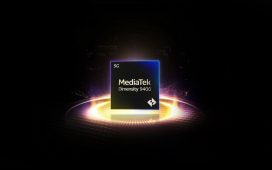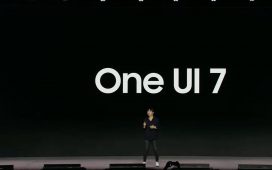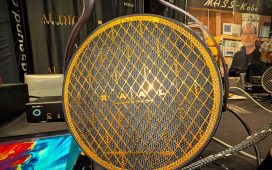TL;DR
- MediaTek has launched the Dimensity 9400 processor for flagship Android phones.
- Highlights include a 3.6GHz CPU, an “Agentic AI Engine,” 8K/60fps video capture, and support for tri-fold foldables.
- The first phones with this chip are launching next week.
MediaTek is the biggest smartphone chip designer on the planet, its chips are in loads of devices. The company has also been making steady progress in the flagship smartphone segment in recent years, taking aim at Qualcomm and its Snapdragon 8 series. Now, the Taiwanese firm has released the Dimensity 9400 chip, which will power some next-generation flagship Android phones.
The MediaTek Dimensity 9400 is built on a second-generation TSMC 3nm process (N3E), and this choice alone should ensure some notable power savings compared to the current-generation Dimensity 9300. In fact, the company says you can expect power savings of up to 40% for the same performance as the previous chip.
A familiar CPU setup, for the most part
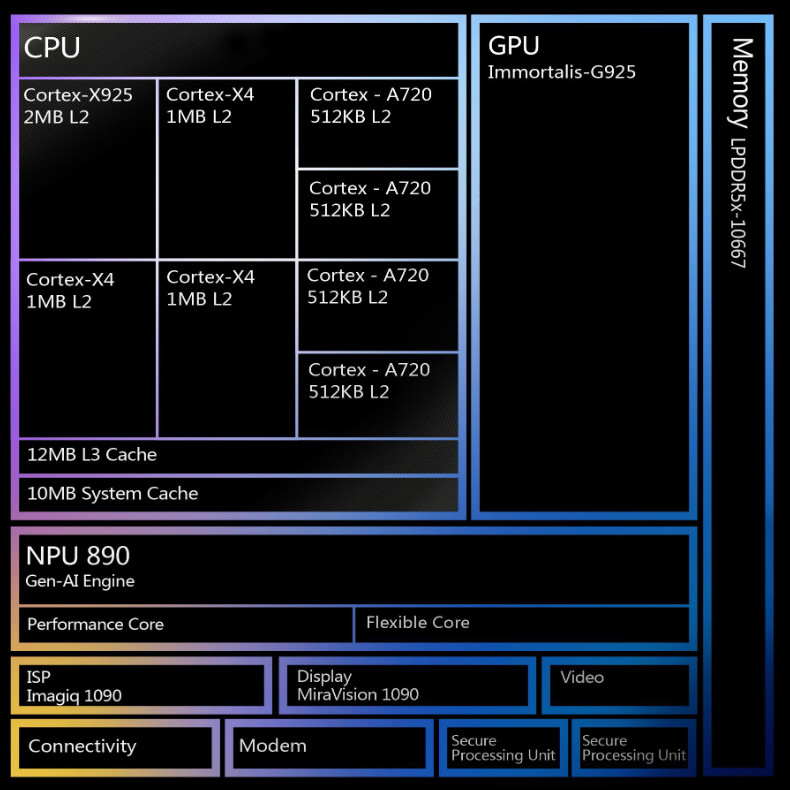
The new processor continues MediaTek’s trend of offering big and medium cores only. Leading the charge is a brand-new Cortex-X925 big core clocked at a speedy 3.63GHz. That’s a significant boost over other Android SoCs and a nearly 400MHz boost over the Dimensity 9300. The firm also mentioned a 15% IPC boost, in line with Arm’s ISO-process claims.
Curiously, the rest of the CPU layout is fundamentally identical to the Dimensity 9300. That means three Cortex-X4 cores and four Cortex-A720 cores, albeit with higher clock speeds of 3.3GHz and 2.4GHz, respectively. The CPU still offers 10MB of system cache but now offers double the L2 cache and 12MB L3 cache (versus 8MB in the old chip).
The Dimensity 9400 CPU is very similar to its predecessor, but the big core has received a hefty upgrade.
We expected three more Cortex-X925 cores at a lower clock speed and four brand-new Cortex-A725 cores in light of the Dimensity 9300’s configuration. We asked MediaTek about this decision and it said this architecture enabled “the best possible combination of single-core performance, multi-core performance and sustained power efficiency.” The company also specifically addressed the decision to retain the Cortex-A720 cores, telling us that it could achieve its desired performance and power consumption targets with these cores on the 3nm process.
Either way, MediaTek says the Dimensity 9400 CPU brings a single-core performance gain of up to 35% in Geekbench 6.2 and a multi-core boost of up to 28%. That single-core boost benefits from the new big core, but that multi-core gain is likely leaning heavily on the new manufacturing process, larger cache sizes, and faster clock speeds.
The Dimensity 9400 gets an Agentic AI Engine
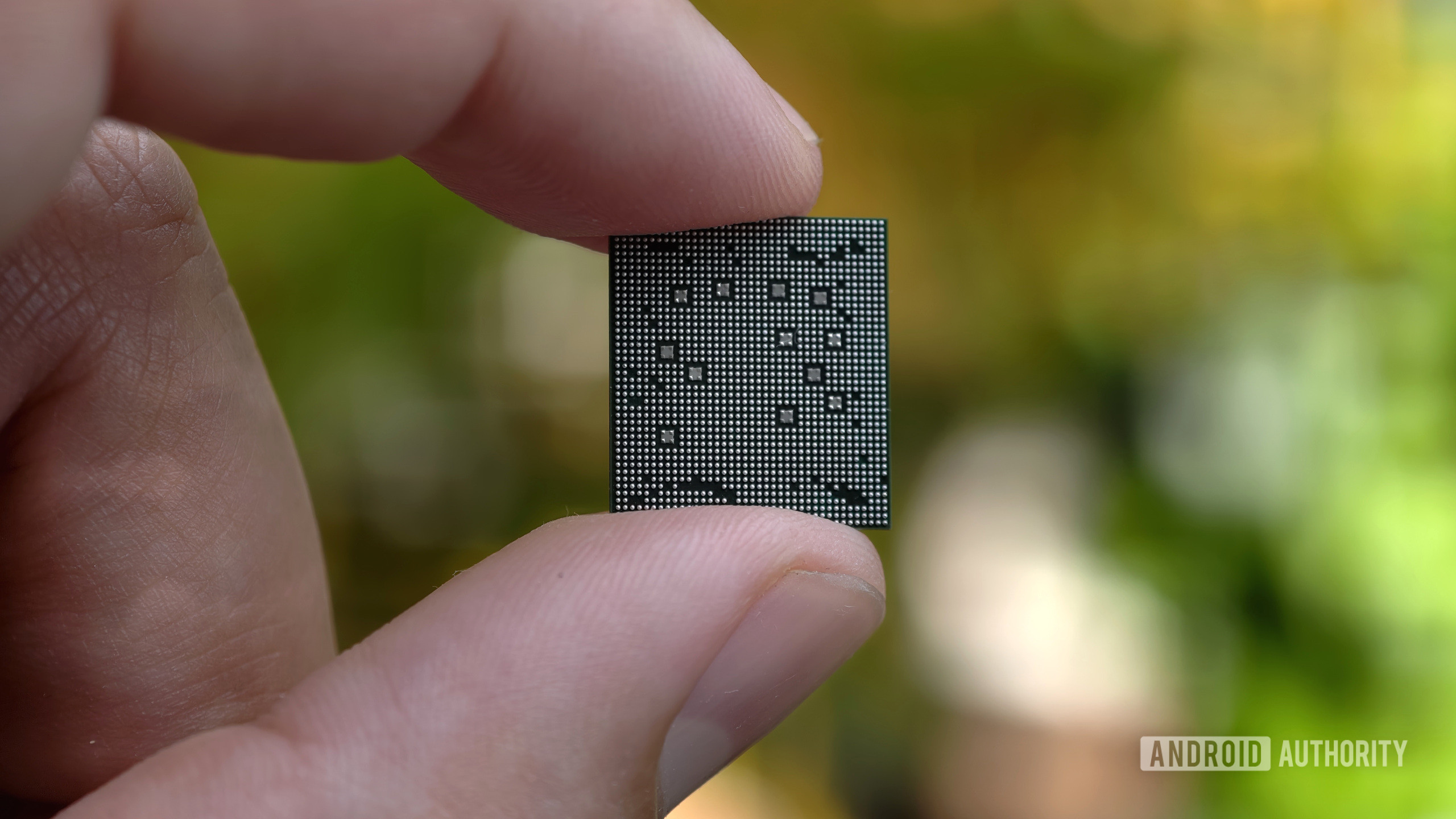
Hadlee Simons / Android Authority
Last year’s chipset was very capable on the AI front, and MediaTek is upping the ante with the Dimensity 9400. The new processor sports an eighth-generation APU dubbed the NPU 890, and it brings improvements like 80% faster prompt performance, an efficiency boost of up to 35%, and a two-fold improvement in diffusion generation performance.
Perhaps the most notable AI-related addition is a so-called Agentic AI Engine. This framework standardizes agentic applications and models for developers. Agentic AI refers to AI tools that can run autonomously, handling tasks and taking actions without user intervention. MediaTek told journalists that it expects OEMs to launch devices that take advantage of this support.
The Dimensity 9400 also has the ability to run multimodal large language models (LLMs) at up to 50 tokens per second. We asked the company about the size of the LLM in this situation and in other scenarios but it only pointed to the aforementioned 80% boost to prompt speed. LLM sizes are important as token rates generally slow down as the size of the model increases. For what it’s worth, the Dimensity 9300 could run a seven-billion parameter model at 20 tokens per second and a 33-billion parameter model at three to four tokens per second.
The Dimensity 9400 supports Gemini Nano, just like Google’s Pixel 9 series.
MediaTek says the new chip also brings other AI-related features like on-device LoRA training and “high-quality” on-device video generation. The chipmaker was mum on more details when it came to the latter. We hope this is less like the Dimensity 9300’s on-device video generation, which seemed to produce results more in line with a low-quality GIF than anything else.
The company also confirmed that the Dimensity 9400 supports Gemini Nano with multimodality. This model was previously restricted to the Pixel 9 series and enables the on-device processing of AI tasks involving images, sounds, and spoken language. This is in addition to text-based functionality (e.g. summaries, proofreading) seen on the original version of Gemini Nano.
An evolutionary GPU?
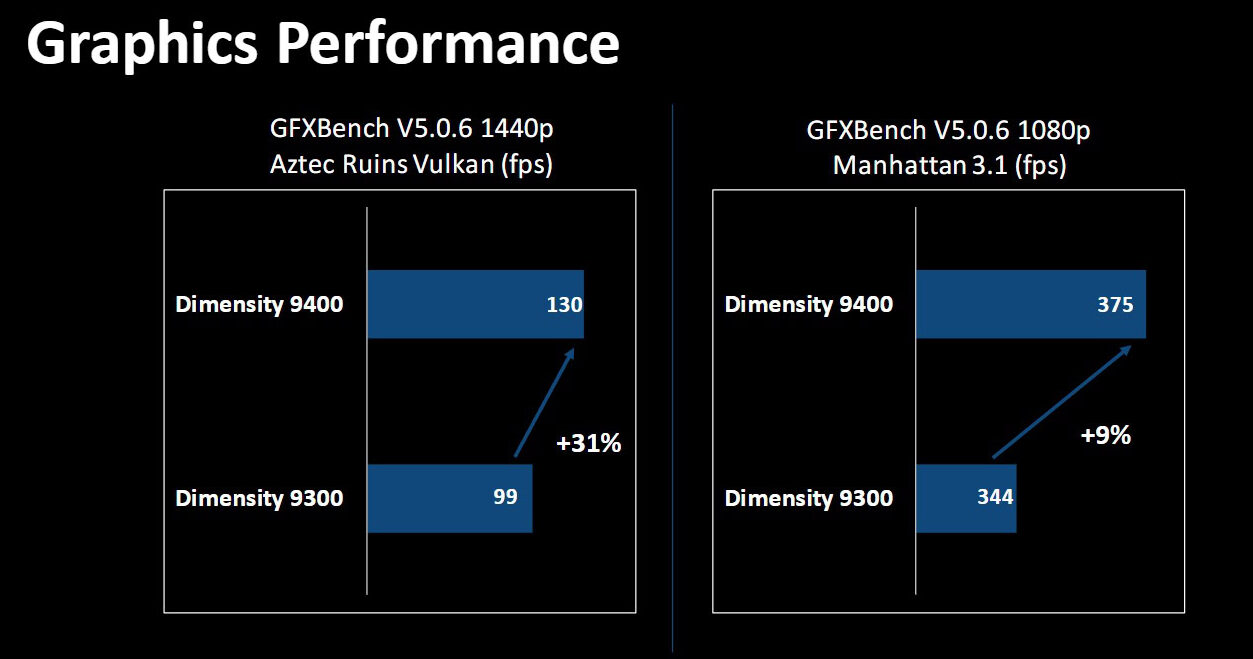
The new processor sports a 12-core Arm Immortalis-G925 GPU, matching its predecessor in terms of core count. Expect up to 41% better peak performance, up to 40% faster ray tracing, and power savings of up to 44%. MediaTek also pointed to a 31% speed boost in the Aztec Ruins Vulkan 1440p benchmark and a more modest 9% boost in the Manhattan 3.1 1080p test. All of these figures should be good news for mobile gamers. However, the company didn’t reveal any figures related to sustained performance, which is an important factor for longer gaming sessions.
Two other GPU features worth knowing are the MediaTek Frame Rate Converter and support for Arm’s Accuracy Super Resolution (ASR) tech. The former is ostensibly a frame interpolation/generation solution while the latter is Arm’s upscaling tech. ASR could be especially great for demanding games, allowing you to run a title at a lower resolution for improved battery life and performance without a major visual sacrifice.
What about camera, display, and audio?
Flagship SoCs tend to get a lot of love as far as camera capabilities are concerned, and the Dimensity 9400 is no exception. This might be the first smartphone SoC to support 8K/60fps video capture (8-bit), beating Qualcomm and Samsung to the punch. Will we actually see phones offering this feature, though? That’s another story, owing to thermal considerations. But fingers crossed that we see this option on a few phones.
Other notable camera features are 8K/30fps capture (10-bit), HDR photo/video capture throughout the entire zoom range, 14% lower power consumption for 4K/60fps capture, and Generative AI Super-Zoom tech (presumably using AI for better long-range zoom).
The Dimensity 9400 might be the first Android SoC to support 8K/60fps video capture.
Moving to the display, MediaTek says the new chip offers support for 180Hz refresh rates at WQHD+ resolutions. However, the Dimensity 9400 also explicitly supports tri-fold foldables thanks to a so-called “tri-port MIPI interface.” This doesn’t necessarily mean that more tri-fold devices are coming in 2025, but it does mean the Dimensity chip will be ready for any manufacturer wanting to release one.
As for audio capabilities, perhaps the most notable addition is an AI Audio Focus feature to eliminate “sudden and unwanted” noises. The company clarified to Android Authority that this was effectively AI noise cancelation tech rather than something akin to the Pixel line’s Audio Magic Eraser, which lets you quickly eliminate unwanted noises after the fact. The chip also supports 24-bit/384Khz Bluetooth audio and 24-bit audio recording with up to six mics.
Connectivity
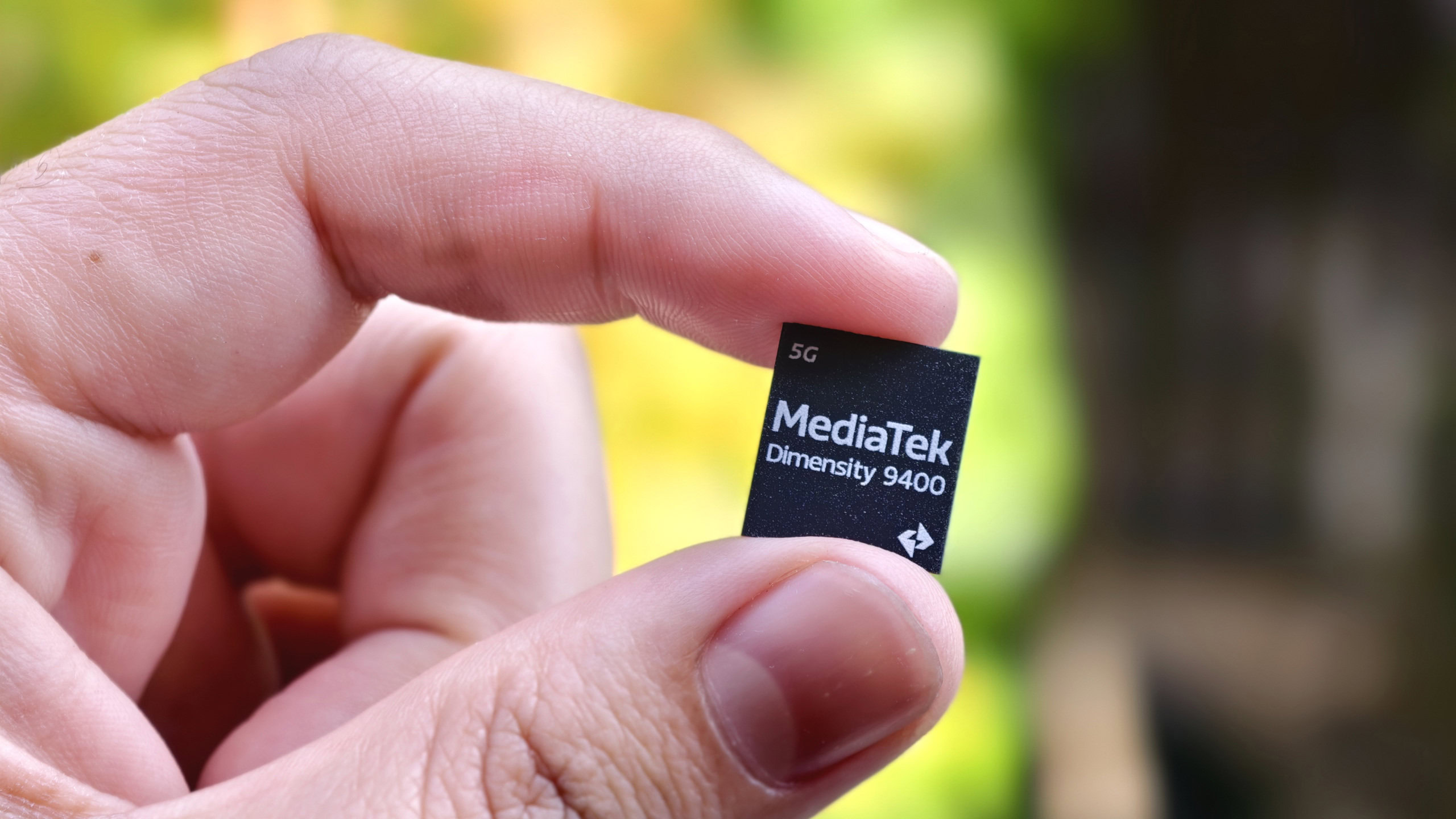
Hadlee Simons / Android Authority
What would a modern smartphone chipset be without a modem? The Dimensity 9400 packs an integrated 5G modem based on the 3GPP Release 17 standard. The modem supports sub-6GHz 5G speeds of up to 7Gbps due to 4CC-CA (four component carrier aggregation) tech. You should also expect mmWave support, 15% faster speeds in “challenging” network conditions, and an 18% boost to power efficiency due to new UltraSave tech.
MediaTek confirmed in response to an Android Authority question that the Dimensity 9400 didn’t actually support satellite connectivity. So any Dimensity 9400 phone with satellite support needs a separate chip. That’s a shame as this feature isn’t uncommon on Android flagships in China and is also starting to come to global Android devices.
The company has also implemented a 4nm Wi-Fi and Bluetooth combo chip, down from the Dimensity 9300’s 6nm connectivity chip. This silicon enables tri-band Wi-Fi concurrency (2.4GHz, 5GHz, 6GHz), 50% lower power consumption, a Wi-Fi coverage boost of up to 30 meters, 25% more efficient Wi-Fi hotspot functionality, and phone-to-phone direct Bluetooth connections up to 1.5 kilometers (0.9 miles) away.
When will we see the first Dimensity 9400 phones?
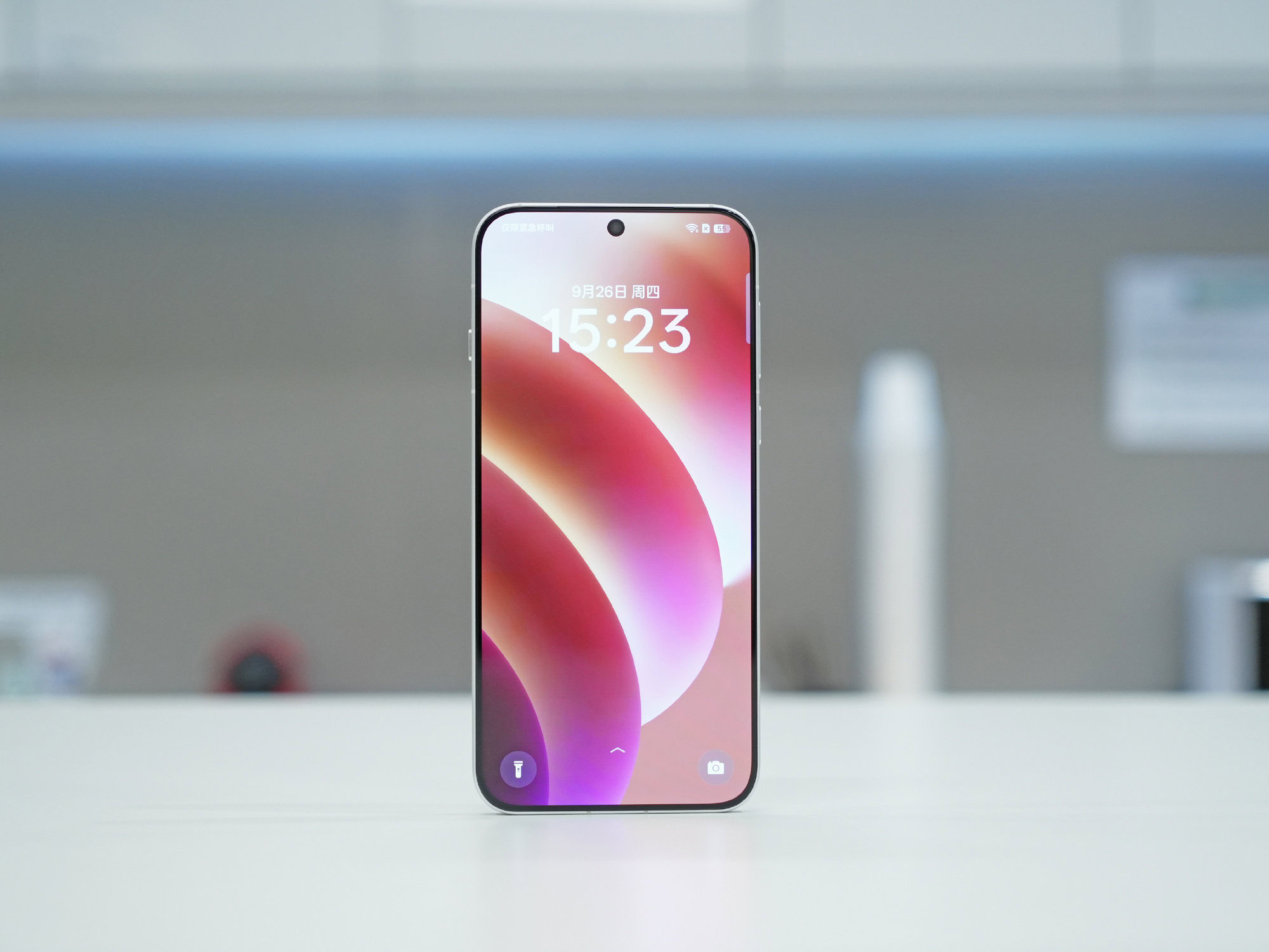
The good news is that the first Dimensity 9400 phones are actually coming really soon. MediaTek confirmed that OPPO and vivo will launch phones with this processor, and we already know that the vivo X200 series will offer this chip when it launches in China on October 14. OPPO is expected to launch the Find X8 series (seen above) with the Dimensity 9400 in the coming weeks too.
Global availability is another matter, though. But if the vivo X100 series is anything to go on, then we can expect a wider release in December. So you might not have to wait until 2025 if you want a Dimensity 9400 phone.
We’ve asked MediaTek for additional information about the chip’s CPU, AI capabilities (e.g. supported LLM size, video generation functionality), AI Audio Focus functionality, and more. We’ll update the article as soon as the company gets back to us.

